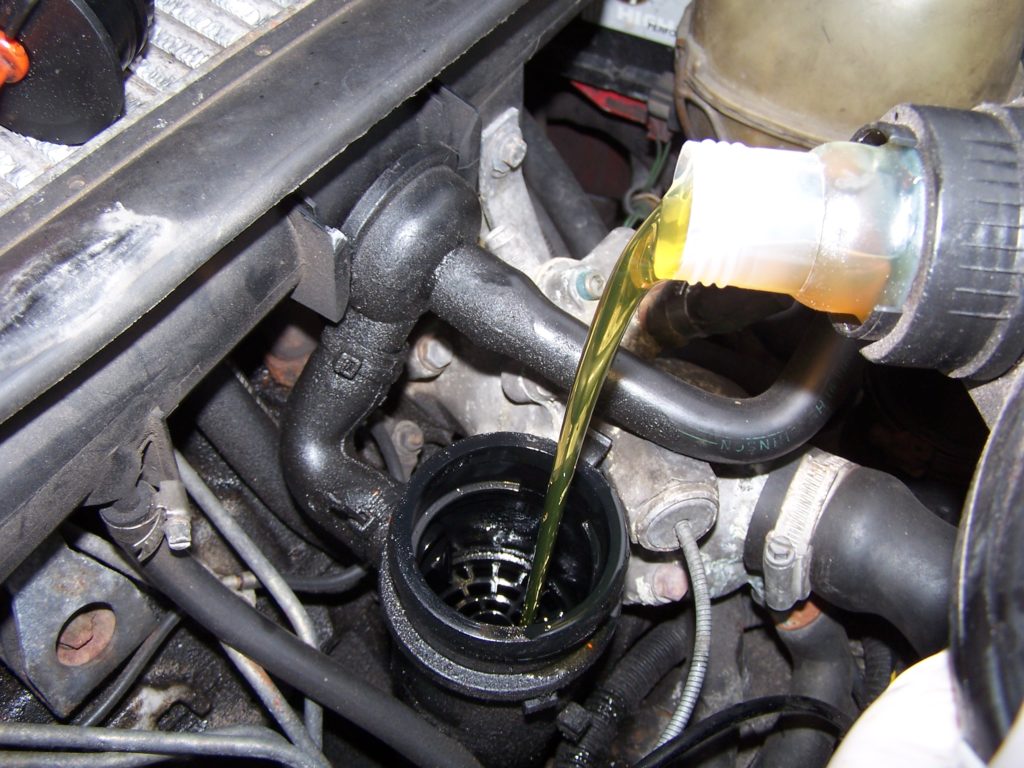
There are no “miracle” engine treatments or pills that will stop oil burning or magically restore worn cylinders and rings. But some crankcase additives can slow oil burning, although they won’t stop it entirely.
There are also “high mileage” motor oils that are specially formulated with extra additives to slow oil consumption. Switching to a high mileage oil the next time you chaage oil may help reduce oil leaks and burning.
Switching to a heavier viscosity motor oil may also help reduce oil consumption. Try moving up one viscosity grade the next time you change oil. If your engine currently uses a 5W-20, switch to a 5W-30 or maybe a 10E030 oil. If you drive an older vehicle that uses 10W-30 oil, try a 10W-40 or possibly a 15W-40 or 20W-40 (but only for warm weather driving because 15W-40 and 20W-40 may be too thick for cold weather starting and lubrication).
If your engine is using oil because of a leak, the leak must be fixed to stop the loss of oil. Sometimes all that’s necessary is to retighten the valve cover or pan gasket mounting bolts because they can loosen over time. But if the gaskets are crushed and have lost their elasticity, you will need new gaskets. Valve cover, timing cover and oil pan gaskets are usually not too difficult to replace, but leaky crankshaft end seals can require a lot of disassembly (particularly the rear main crankshaft oil seal).
One alternative to replacing a leaky gasket or seal is to add a bottle of “seal conditioner” to the crankcase, or to switch to a “high mileage” motor oil. The seal conditioner additives in these products soak into old gaskets and seals and cause them to swell slightly. Hopefully, this will slow or seal the leak.
If the engine is using oil because of worn valve guides or valve guide seals, it is possible to replace just the valve guide seals without having to remove the cylinder heads or overhaul the engine. New valve guide seals can drastically reduce oil consumption. I have seen older high mileage engines go from using a quart of oil every 500 miles to using no oil between oil changes (3000 miles) by simply replacing the valve guide seals!
Replacing the valve stem seals requires a special valve spring compressor to disassemble the valve springs on each cylinder (one at a time). Remove the valve cover and all of the spark plugs. The piston in the first cylinder must then be placed at top dead center. This can be done by rotating the engine with a wrench on the crankshaft pulley until the timing marks line up. If the engine has no timing marks, insert a plastic straw into the cylinder through the spark plug hole so you can feel the piston as it approaches top dead center.
The cylinder must then be pressurized with compressed air through the spark plug hole to prevent the valves from dropping down into the cylinder when the valve springs and retainers are removed. Another trick for holding the valves in place is to snake a piece of rope or rubber tubing into the combustion chamber through the spark plug hole when the piston is at top dead center. The rope will fill the void between the piston and valves to hold the valves in place while you change the seals.
Be careful, because if a valve accidentally drops down into the cylinder, the cylinder head will have to come off the engine.
Source: Aa1car
